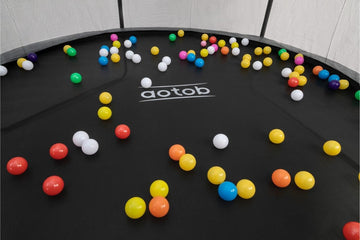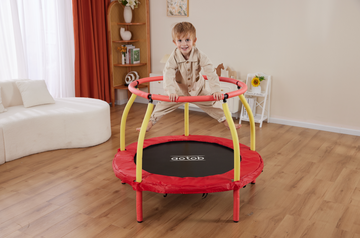Trampolines and rebounders are both equipment used for bouncing and jumping, but they have distinct differences in terms of size, purpose, and usage:
Size:
Trampoline: Trampolines are typically much larger and come in various sizes, with diameters ranging from 6 feet to 16 feet or more. They are commonly used for recreational and fitness purposes in backyards or at trampoline parks.
Rebounder: Rebounders are much smaller and more compact, resembling a mini-trampoline. They are usually around 3 to 4 feet in diameter and are designed for indoor use.
Purpose:
Trampoline: Trampolines are primarily used for recreational jumping, exercise, and performing various acrobatic and gymnastic maneuvers. They are suitable for multiple users at once and are often found in outdoor settings.
Rebounder: Rebounders are specifically designed for low-impact aerobic exercise and fitness. They are ideal for individual use and can be used indoors, often as part of a rebounding exercise routine.
Safety Features:
Trampoline: Trampolines for recreational use typically have safety enclosures, padded springs or frames, and safety guidelines to reduce the risk of injury.
Rebounder: Rebounders are generally lower to the ground and have a smaller, firmer bouncing surface, making them less prone to high-impact injuries. They are designed for controlled, low-impact bouncing exercises.
Exercise and Health Benefits:
Trampoline: Trampolines can be used for both recreational fun and serious exercise. They offer cardiovascular benefits, improved balance, and are used for various gymnastic and acrobatic movements.
Rebounder: Rebounders are primarily used for rebounding exercises, which are known to provide health benefits such as improved lymphatic circulation, increased bone density, and enhanced balance and coordination. Rebounder exercises are often used for fitness and rehabilitation.
Portability:
Trampoline: Trampolines are typically heavy and not easily portable. They are meant to stay in one location, such as a backyard or a trampoline park.
Rebounder: Rebounders are compact and lightweight, making them easy to move and store. This portability allows for indoor use and convenient storage.
In summary, the main differences between trampolines and rebounders are their size, purpose, safety features, and portability. Trampolines are larger, used for recreation and acrobatics, and often located outdoors with safety features for multiple users. Rebounders are smaller, designed for low-impact exercise, can be used indoors, and are primarily intended for individual fitness and health benefits.








